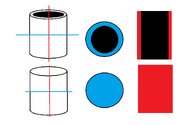- 11,097
- 4,318
Therefir recently calculated Izuku's lifting strength when crushing a stone using surface area and pressure. Some calc group members doubted the method, and Ugarik said that the method leads to inflated results.
Thing is, there are multiple calculations using this method. For example, I calculated Hela's lifting strength to be Class T in the MCU here.
So should this method be used, or not?
Thing is, there are multiple calculations using this method. For example, I calculated Hela's lifting strength to be Class T in the MCU here.
So should this method be used, or not?
